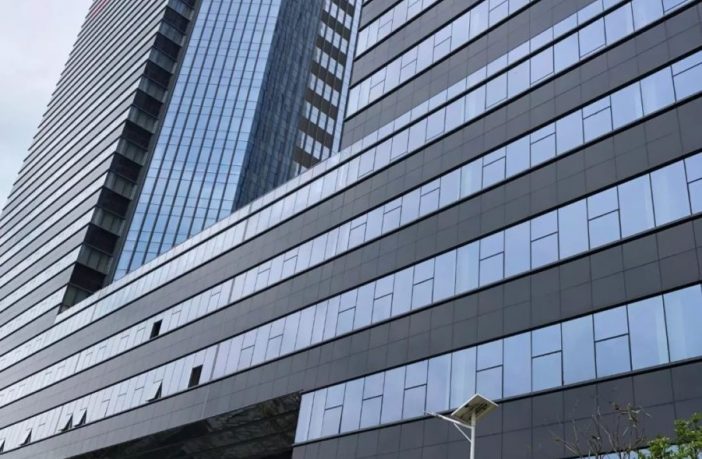- Thin film CIGS module manufacturer Hanergy says it has applied its HanWall building-integrated PV (BIPV) façade to a skyscraper in Nanchang City, in China’s Jiangxi province.
- The company said it attached 4,600 Oerlikon thin film modules to the exterior of the China Pharmaceutical International Innovation Park building, covering 6,000 m².
- With each module having a power rating of 100 W, the installation has a 460 kW generation capacity.
According to Hanergy, the installation will feed electricity directly to the building, powering indoor lighting, ventilation and air conditioning. As a result, the building’s grid demand will be “substantially negligible”.
“The current project is aligned with our New Eco City initiative which is primarily intended to introduce the idea of eco building into the public arena,” said Hanergy senior VP Zhang Bin.
Potential
With more countries targeting net-carbon neutral economies over the next 20-30 years, the building sector in particular has to reduce its ecological footprint by 90%. A report by the European Technology and Innovation Platform for Photovoltaics found building-integrated PV systems, such as the one installed by Hanergy, could make up a 5 GW market by 2030 across the EU’s post-Brexit member states, Norway and Switzerland.
While the potential does not match that of ‘regular’ rooftop installations, the rise of BIPV could be inevitable as skyscrapers and city center commercial buildings are highly energy intensive. Cladding the facades of such structures with thin film could offer a cost effective option to meet energy demand which usually coincides with daylight hours.
Lower carbon footprint
Copper indium gallium selenide (CIGS) thin film modules have become reasonably competitive in terms of conversion efficiency, with a recent world record of 21.2% achieved by Chinese manufacturer Hanergy. The technology is also said to prompt fewer carbon dioxide emissions during production than conventional crystalline rivals. CIGS has a footprint of 12-20g of CO2 equivalent per kilowatt-hour of generation capacity compared to 50-60g for crystalline silicon modules and 700g-1kg for fossil fuel based generation capacity.
However, few analysts appear to have factored in the reluctance of architects to work with thin-film façade modules. The market has remained relatively niche despite its apparent advantages.
In December, Hanergy secured a contract with Environmental Technology Solutions in Australia to supply 4.3 MW of its frameless black CIGS modules to ‘commercial high-rise projects’. The deal marked the first occasion Hanergy had successfully marketed its HanWall modules outside China.
Author: Marian Willuhn
This article was originally published in pv magazine and is republished with permission.
















